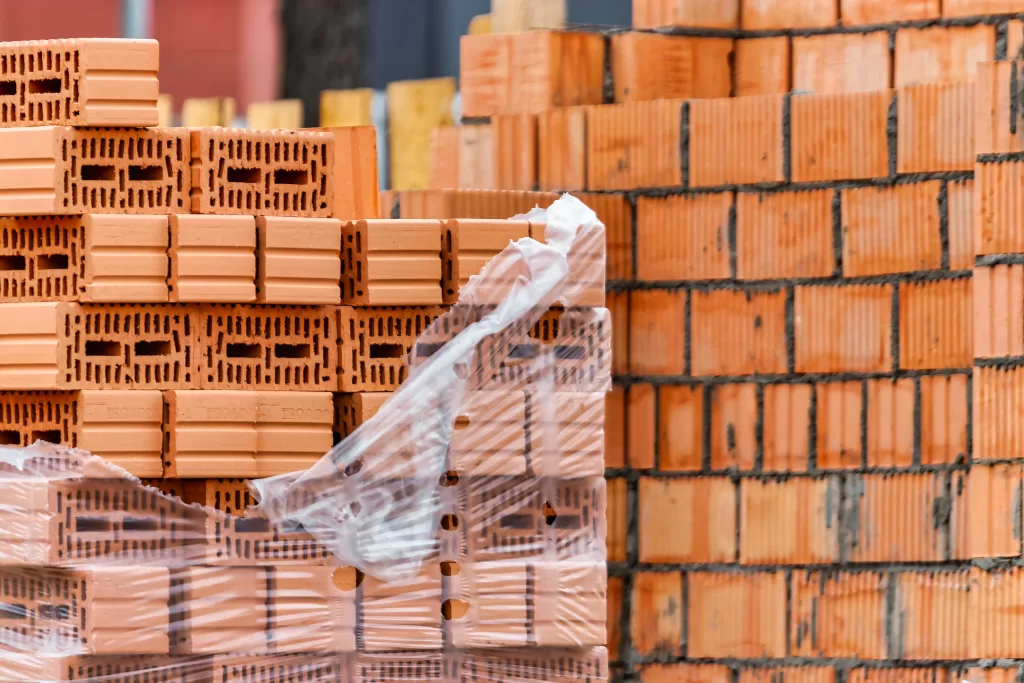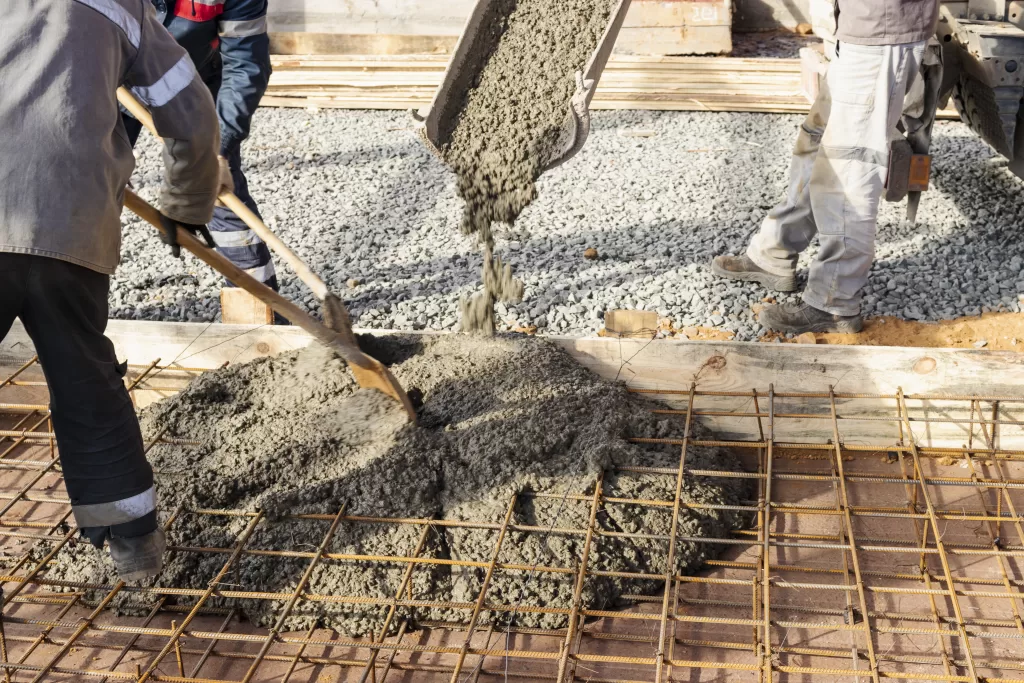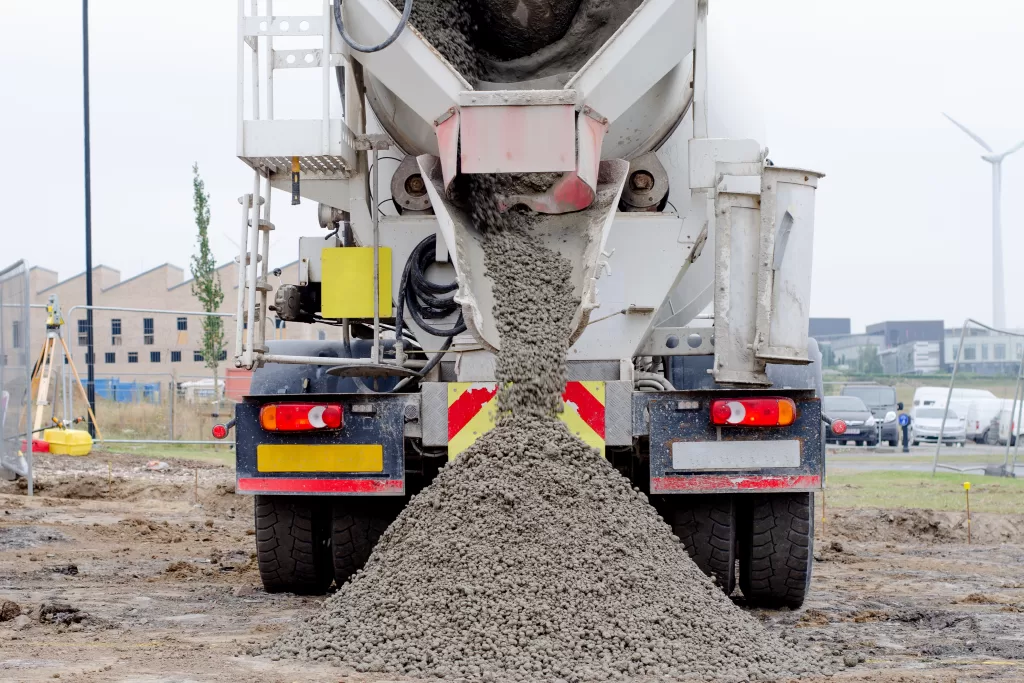Bricks come in various types and sizes with different constituent materials. From conventional burnt clay bricks to modern concrete blocks, each type of brick has distinct properties and varied applications. Therefore, when building a new structure, exploring the types of bricks is essential to make informed decisions. Keep reading on to know more about the types of bricks available.
What Are Bricks?
Bricks are one of the primary building materials. They are made from clay, shale, or other materials such as concrete or fly ash. Bricks come in diverse types and are manufactured by employing varied processes. Their manufacturing process depends on the material used to ensure durability and strength. The primary purpose of bricks is to create sturdy walls, pavements, and other structural elements like buildings, and bridges.
Different Types of Bricks
The types of brick mentioned offer unique characteristics in construction:
-
- Burnt Clay Bricks:
-
- Solid bricks: These are conventional bricks, compact and strong, used for load-bearing structures due to their high compressive strength.
-
- Perforated bricks: These burnt clay bricks have holes for better insulation and reduced overall weight. These bricks have adequate compressive strength and high water absorption properties.
-
- Hollow bricks: These bricks have cavities or voids. These are lighter and provide better thermal insulation. They are suitable for partition walls and in areas where insulation is crucial.
-
- Burnt Clay Bricks:
-
- Concrete blocks:
-
- Solid concrete blocks: Made using cement, sand, and aggregates, these blocks are dense and heavy with high compressive strength. They are commonly used in load-bearing walls and heavy structural elements.
-
- Hollow concrete blocks: These blocks have voids inside to reduce weight and enhance insulation properties. They are versatile and used in various construction applications, especially where weight reduction is essential.
-
- Concrete blocks:
-
- Sand lime/calcium silicate bricks: These bricks are created by mixing sand, lime and water followed by a chemical process for hardening. These bricks offer exceptional durability and strength. They have a uniform appearance and are used in load-bearing structures due to their high compressive strength.
-
- Fly ash lime bricks: These bricks are made by utilising fly ash, a byproduct of coal combustion. These bricks are lightweight and possess high compressive strength. They are suitable for various construction applications.
-
- Clay fly ash brick: These are made by combining clay and fly ash to gain advantages of both materials. They exhibit better compressive strength and durability compared to traditional clay bricks. These bricks have lower water absorption rates and are cost-effective.
-
- Aerated Autoclaved Concrete (AAC) blocks: AAC blocks are lightweight, and made from a mix of cement, lime, sand, and aerating agents. They are cured in an autoclave to make them porous blocks with excellent thermal insulation properties. AAC blocks are easy to work with and suitable for both load-bearing and non-load-bearing structures.
-
- Pulverized fuel ash-cement bricks: These bricks are manufactured by combining pulverised fuel ash with cement and are used for their high durability and strength. They are environmentally friendly and contribute to sustainable construction practices by utilising industrial waste materials.
How To Identify The Type Of Bricks?
The following factors are considered to identify the type of brick:
-
- Colour and texture: Bricks come in diverse colours and textures. Common burnt clay bricks typically have a reddish-brown shade, while concrete bricks have a grey colour. Observe the surface texture, as some bricks have a smooth finish, while others might be rough or textured.
-
- Size and shape: Bricks have standard sizes but vary depending on the type of brick. Measure the dimensions and shape of the brick as per industry standards. Pay attention to specific shapes like perforations or hollows in certain bricks, which indicate their intended use.
-
- Sound test: Tap the brick lightly. A high-quality brick produces a clear, ringing sound. If the sound is dull or muffled, it might indicate that the brick is of inferior quality.
What Are the Properties of Bricks?
Here are the key properties of bricks:
-
- Compressive strength: It represents the brick’s ability to withstand loads without deformation or collapse. Bricks with higher compressive strength offer better structural stability.
-
- Efflorescence: It occurs when the salt particles present in bricks or mortar come up to the surface due to moisture. Bricks manufactured with low salt content and proper firing techniques minimise the risk of efflorescence.
-
- Insulation: The insulation properties of bricks determine their ability to regulate temperature and resist heat transfer. Bricks with good insulation reduce heat flow and contribute to energy efficiency in buildings.
Planning to build your home? Use a house construction cost calculator to determine construction costs effortlessly.
FAQs
What are the main types of bricks used in construction?
The most common types of bricks include burnt clay bricks, concrete bricks, and specialised bricks like AAC blocks and fly ash bricks.
What are the different sizes of brick?
Standard brick sizes as per IS 1077 (1992) include:
-
- Modular size = 190 x 90 x 90 mm or 190 x 90 x 40 mm.
-
- Non-modular = 230 x 110 x 70 mm or 230 x 110 x 30 mm.
-
- Custom sizes are also manufactured based on construction requirements.
Can different types of bricks be used interchangeably in construction?
Some bricks can be used interchangeably in certain applications. However, it is essential to consider the specific properties, strengths, and intended uses of each brick type to ensure structural integrity and adherence to construction standards.
What are some advantages of using concrete bricks?
Concrete bricks offer several advantages in construction. They provide exceptional strength, durability, fire resistance, and uniformity in shape.














